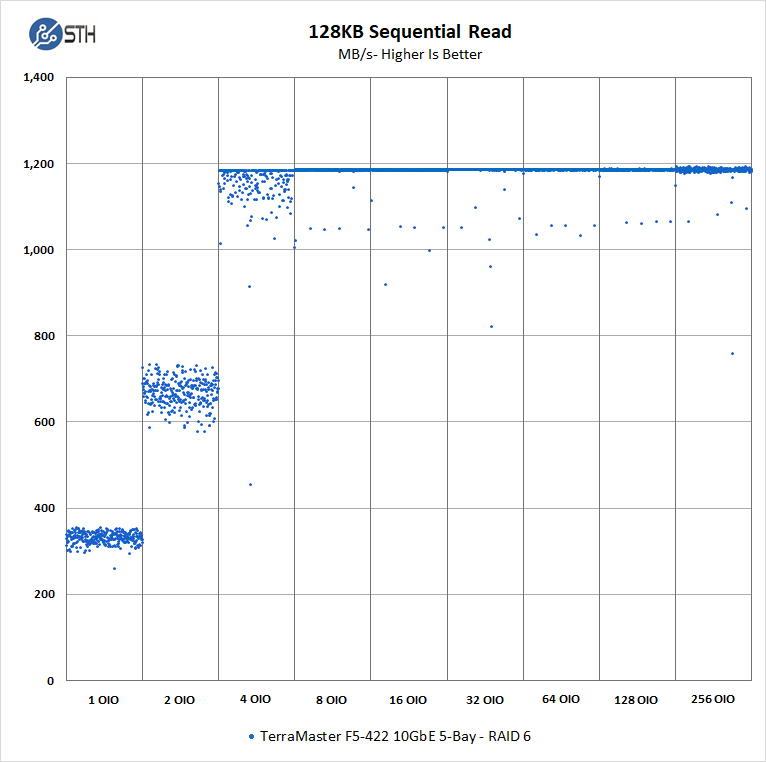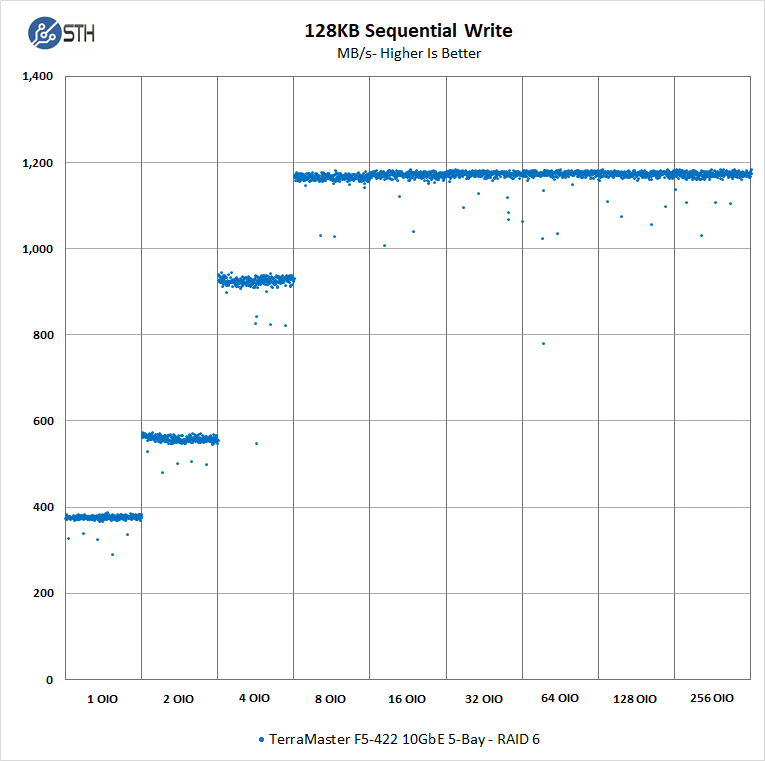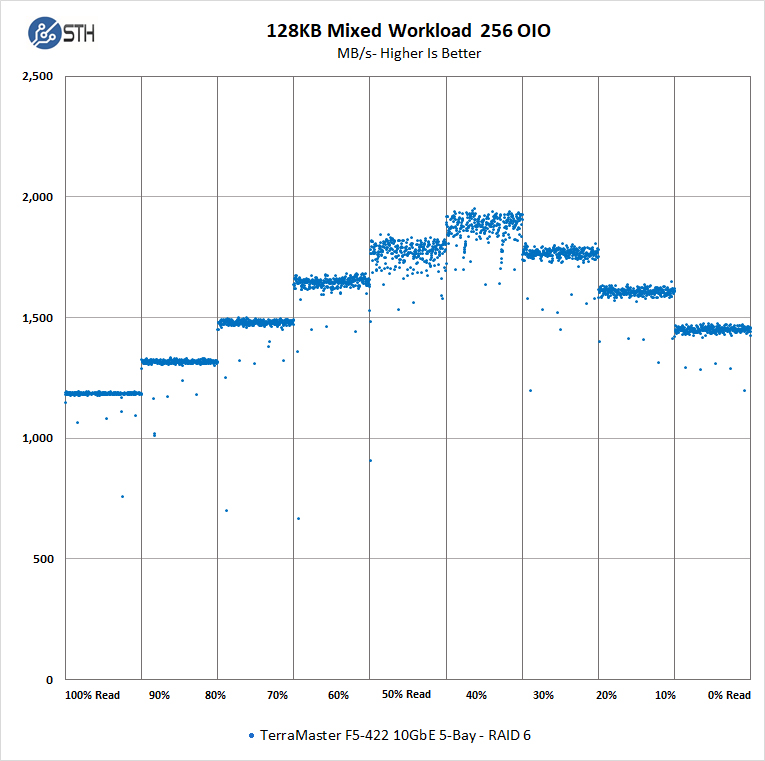Enterprise NAS Performance Tests
With the start off the new year, we have updated our NAS performance tests with an extensive Enterprise NAS Performance benchmark that drills down into performance levels we have not benchmarked to date. Many benchmarks show systems setup for theoretical maximum performance results that users will not reach in a working environment. Our benchmark begins by creating a completely random large 2.1TB file, then preconditions the NAS, and brings it to steady-state to simulate an SMB working environment. Each test begins by preconditioning the NAS for several hours, then bringing the NAS to steady-state before running the desired benchmark. For NAS units with a small number of storage drives in the desktop-class, we will use 8 workers in our tests.
TerraMaster F5-422 CIFS Performance Tests
We begin our testing with standard Common Internet File System (CIFS) performance benchmarks. CIFS is designed as a file access protocol for the internet and based on the Server Message Block (SMB) protocol used with the Windows operating system.
We start CIFS testing with Sequential Read and Write tests using 128KB block sizes, then finish with Mixed Workloads to simulate users reading and writing to the NAS at the same time. We also include 4K Random workloads in the same format.
For RAID type used in our tests, we set the TerraMaster F5-422 to RAID 6. Data security should be high on the user’s list but does cut into max capacity. Having two drives for parity checks gives breathing space in case of a drive failure and gives data security in long RAID rebuild times.
128K Sequential Read Performance
We start with 128KB large-block Sequential Read and Write tests and finish with Mixed workloads.

In the graphs, each dot represents the IO rate for every second. Dots that appear below the median line are outliers showing decreased performance. With 128KB Sequential Reads do reach almost 1,200 MB/s on these tests using 10GbE networking.
128K Sequential Write Performance
Next, we look at the sequential write performance of the NAS.

With 128KB Sequential Writes, we also see almost 1,200 MB/s on 10GbE networking.
128K Sequential Mixed Workloads Performance
NAS’s in SMB environments will often see Mixed workloads where users read and write data at the same time in varying amounts, here we break our chart into 100% Reads to 100% Writes in varying percentages.

In our Mixed workloads, we see relativity solid median lines until 50% Read/Write to 40% Read / 60% Writes where the median line breaks up and begins showing larger amounts of outliners.
We continue with 4K Random workloads.




Hope this trend continues. I think a lot of readers view this as a sweet spot with HD count and 10gb. Of course I wish the prices was half of what they are but hey this is low volume prosumer gear. I would like to add that just a case for 4 or 5 hard drives with nothing else costs north of $100 (new). I’m using a small dell tower for my personal nas and was looking for a convenient way to mount the drives… double sided tape and a case fan were more in my budget xd
What about power consumption at idle, 4K transcoding etc … ?
I’d be interested in seeing results from a raid 10 or 0 array, just to see the best possible numbers this box can dish out. (understanding the disadvantages of not having any protection in raid 0, and the loss of extra capacity at raid 10).
I think it would be good to precise what file system is used on the Test Setup for the different NAS storages compared.
Because from my understanding TerraMaster F5-422 is using Btrfs file system by default, which some are accusing of delivering lower throughput, especially in high I/O demanding processes and when using 10GBe connection (the bottleneck could be far less visible for 1GBe connection). This is why QNAP doesn’t want to support Btrfs for now.. And while Synology support Btrfs, I’m not sure it is set by default.
In addition F5-422 supports EXT4 also, so maybe the performance could be a little better with different file system?
> After turning on the NAS, connecting it to your network, type in “start.terra-master.com” in your browser to bring up the Quick Installation Guide.
I would not buy a NAS that requires internet and manufacturer’s website to be able to configure my local device. Would it be a brick if their website gone down?